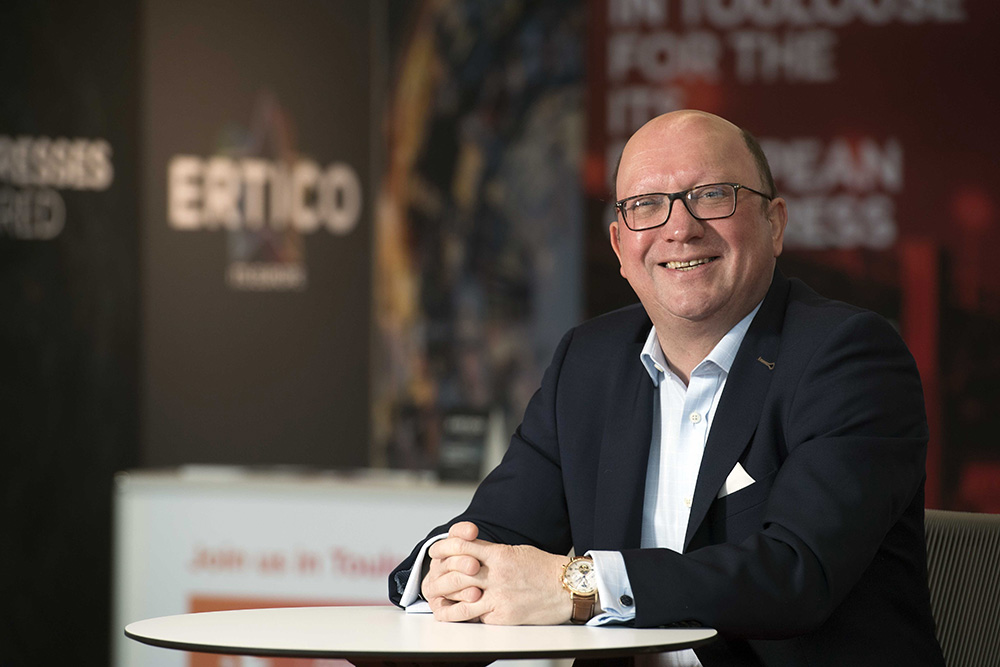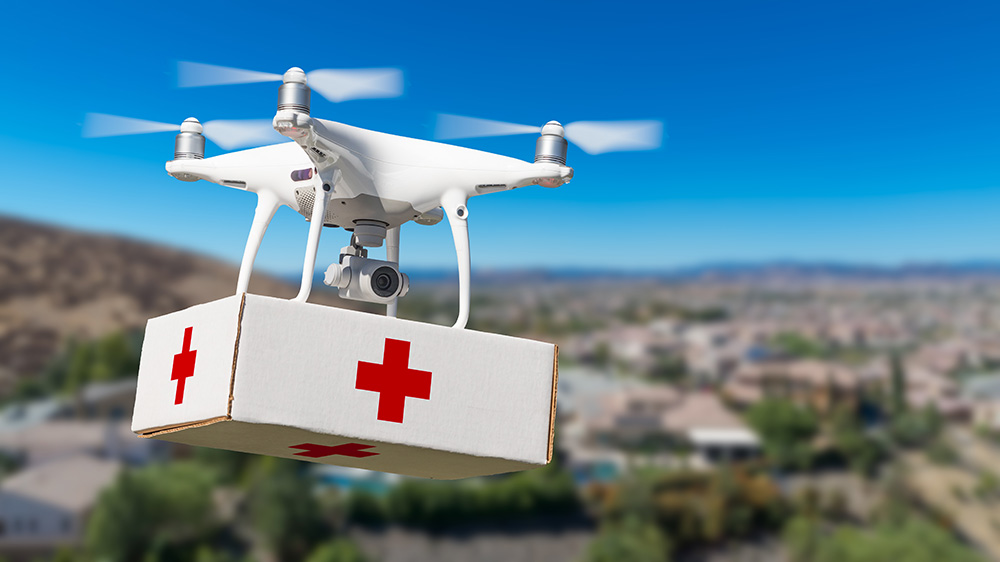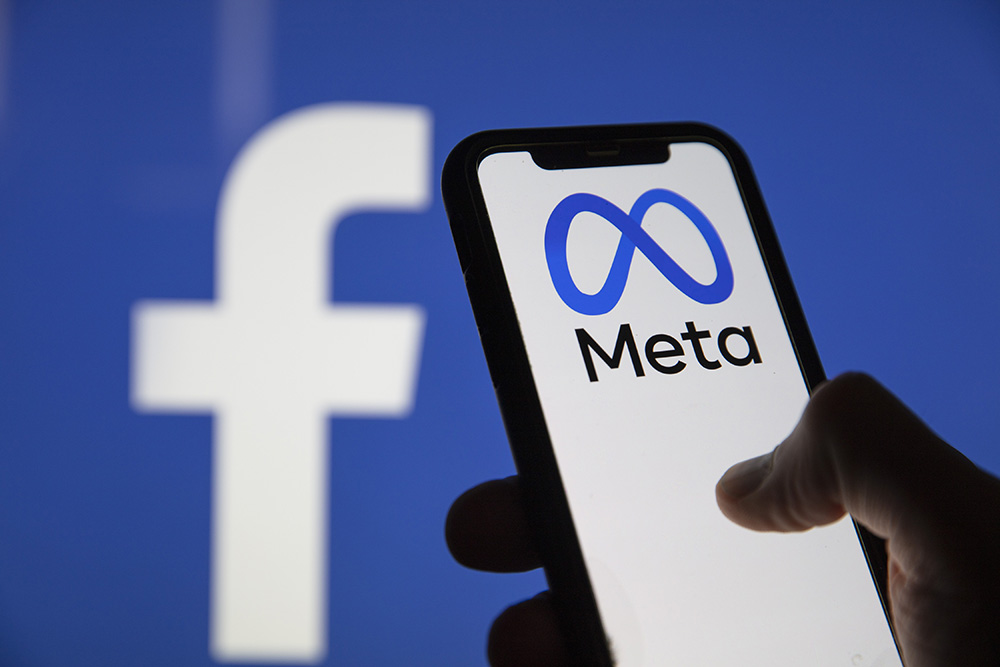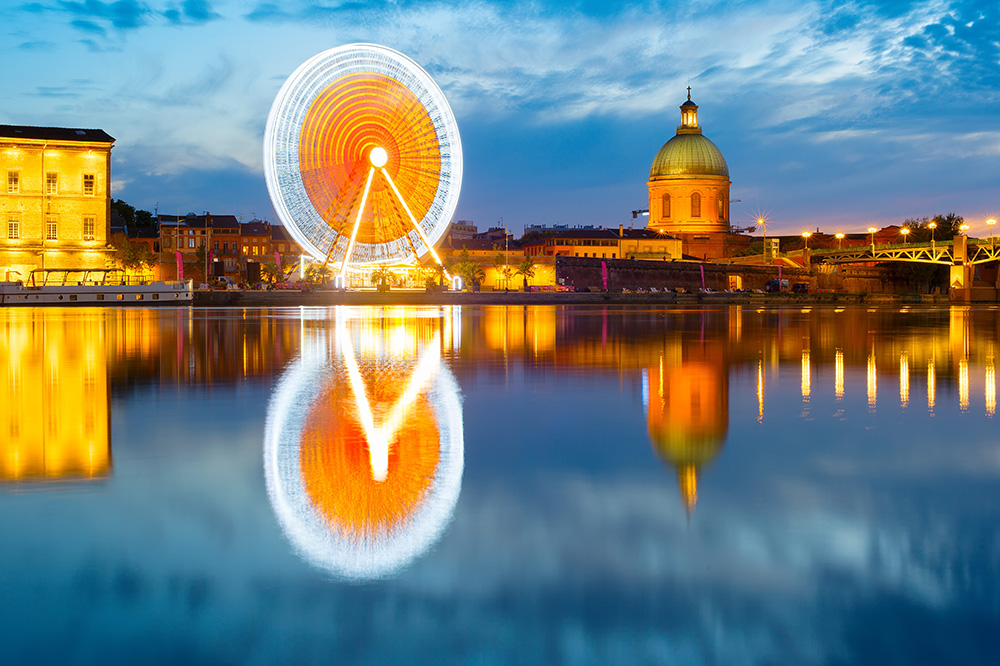
A varied career has brought Joost Vantomme to his current position as CEO of Ertico – ITS Europe. Trained as a lawyer, he has worked in IT, telecoms, postal, e-commerce and logistics, government, European advocacy, consultancy and automotive. “It was actually a combination of all the elements that I see in Ertico,” he says now. “This is nicely combining my past.”
Working on European policy projects, Vantomme realised that success did not always depend on being able to give ‘yes or no’ answers. “This is not the business of being right or wrong,” he explains. “It is the business of having the authority to bring over your message to the policymaker or whoever - and to see what’s in it for the other side, what’s in it for the one who is listening to you? How can you convince somebody? Because if you only ‘do your own show’ it doesn’t interest the other side.”
Vantomme likes to use the expression ‘connecting the dots’.
“How do you connect your dots with their dots, and how do you connect the dots of the different professions - telecoms, logistics, transport, automotive, connectivity, clouds, artificial intelligence and all these other things - how can we connect all that into smart and sustainable mobility? And that’s exactly what we do in Ertico - that’s why I love my job, since it all fits nicely together. So that’s one side that connects my personal dots in terms of career path for 30 years now; but secondly, it also connects the dots between the ecosystem, which is getting broader and broader.”
Bridging the gap
For transport, this means bridging the gap between the physical infrastructure– asphalt, tarmac, traffic lights, signs, lane markings – and the digital side of the equation like the exchange of data, for example.
“We’re getting into a blurred situation where we have the hardware and the software and we are connecting the dots with the communications industry, with the GAFAs [Google, Apple, Facebook and Amazon], all eager to be more involved in our vertical, the transport and mobility ecosystem. And that’s the second thing that we do at Ertico - connecting the public and private partners.”

As well as working with this very broad constituency, which ranges from traffic to cloud operators, Ertico also sets great store by research. “Without research, we don’t know what will happen in 10 years - they are really forward-looking,” he says. “Ertico has the pleasure of having a large number of public and privately-held research centres in its membership. Other sectors in our partnership are the OEMs/automotive manufacturers, the suppliers, the service providers, public authorities and the users. And so all of that we bring together within Ertico, and it’s also our job to connect these dots with each other. It’s not only about networking and organising webinars, but also about really doing projects together.” Ertico has built consortia among its 120 partners to bid for European Commission funding around smart and sustainable mobility.
Focus areas
It has four focus areas - connected, cooperative and automated mobility (CCAM); urban mobility; clean and eco-mobility; and transport & logistics – which include all of the hot-button issues for transportation today. From Vehicle to Vehicle (V2V) to driverless cars, to sustainable urban mobility plans, climate neutrality, 5G, sustainability, air quality, delivery and movement of goods, digitisation – and above all, interoperability.
“Voila!” Vantomme says. “So we connect all these dots – public, private - and we connect these partners not only with themselves, but also with policymakers and with the outside world.”
Of all the hats Vantomme has worn in his career, telecoms sounds particularly relevant to his current role. “It’s a combination,” he suggests. “Mostly of IT, telecoms, connectivity - and always trying to see what technology is good for - what does it serve? Because technology is very nice, it can be sexy, but who and what does it help? Technology is not there just to be there - we should have use cases.”
Of his telecoms experience, he says: “It has always intrigued me: do we really need 4G? Do we really need 5G? Of course we do! Do we need all these apps on our smartphones? Why do we have multiple operating systems? What community do we serve – apart from the individual companies producing these nice, shiny tools?”
The same questions are relevant for transportation and mobility. “These are exactly the discussions we have in transport,” Vantomme continues. “Transport used to be ‘mono-mode’: it was a train, next to a car, next to a truck, next to a bicycle, next to a pedestrian and then an airline and so on – and they didn’t ‘talk’ to each other. But now, thanks to technology, the one who is walking will be alerted that there is something going on around the corner, without seeing it; or a car will be alerted to the fact that there is dense traffic 100m away so you’d better take another route.”
Smart technology
It’s this kind of optimisation through smart technology, this interlinking, that Vantomme is passionate about – so we are back to ‘connecting the dots’, where digitalisation has to be an enabler rather than being seen as an end in itself. “Connectivity makes our ‘Internet of Mobility’ smarter, more sustainable, more efficient and after all, more safe,” he says.
Founded by the European Commission 30 years ago, Ertico was set up to promote and to test innovation in transport and mobility: in other words, it is an incubator, leading the industry to collaborate, test and hopefully deploy and commercialise technology. At that point, Ertico steps away - but Vantomme points to its role in bringing together mobility stakeholders in innovation platforms on issues such as traffic management, travel information, road safety data sharing and even automated valet parking.
“Three decades ago, it was about digital roadmaps – today it’s 5G connectivity or the use of artificial intelligence in traffic management, which didn’t exist 20 years ago,” he says. “Our role is incubate, to facilitate, to innovate smart mobility.”

Disruptive ideas are important. “We should be aware of what are the ‘big tickets’ for the future,” he adds. “Everybody talks about connected and autonomous, everybody talks about urban mobility, clean mobility, the Green Deal. But what is coming after tomorrow?”
Data universe
He points to Facebook’s reinvention as Meta, creating tools which allow people to communicate via augmented and virtual reality technology. “I will see you literally sitting at a table - but it’s not you, it’s your shadow, your hologram,” Vantomme says. “So what does this mean for transport and logistics and for our mobility? What does artificial intelligence mean? How will the European Data Act influence and even revolutionise the transport industry?”
There are many companies which seek “to exploit the data universe through mobility”. Fair enough, but this is exactly why the European Union should be proud of its sound privacy and data protection legislation, the General Data Protection Regulation (GDPR), he thinks: “Let’s be cautious not to run into the other side of the equation, where nobody knows what’s happening with data and with artificial intelligence algorithms.”
The ITS European Congress in Toulouse, France, will be a perfect opportunity for all of these threads.
“In Toulouse you will see a lot of new-generation mobility,” Vantomme says. “So it’s not only about traditional players, there will be some new ones, such as cloud providers.” He is particularly looking forward to some of the high-level speakers which have been attracted to the event, such as Google: “They are extremely interested in the physical mobility ecosystem.”
Urban air mobility
Toulouse is also looking into urban air mobility (UAM). Vantomme acknowledges that there are questions from the general public about drones. But he insists: “Whenever something new like this arrives, there is always a percentage of people who are scared and a percentage who embrace it. The scared people say: ‘Well, what about my privacy? What about safety?’ The others are like the incubators, like Ertico, and they say: ‘Let’s maybe have a complementarity with road traffic and low urban air traffic, and maybe we can capitalise on a better throughput of traffic and goods as well.’ And they see it more from the positive side – the ‘glass half-full’ side not half-empty.” What side is Vantomme on? “I’m always on the other side,” he laughs. “The full side!”
Vantomme is an enthusiastic presence, infusing people with a sense of the possibilities: “I want to capitalise on the traditional transport industry and also bring the communication and connectivity and automation side of it.”
This could be Internet of Things connectivity, for instance – but also new forms of energy and power generation. “The transport industry didn’t talk to the energy sector 20 years ago,” he says. “We were using the energy sector for petrol, diesel, for electricity maybe - but we didn’t see each other as integrated. Now today, we have charging stations talking to the grid managers and talking to the vehicles and even talking to the traffic systems.”
Getting drivers to electric vehicle (EV) charging points potentially requires coordination to ensure that the availability of empty locations does not create a rush that leads to traffic jams. “So we need to orchestrate this - and then the question is ‘who will become the orchestrator?’” Vantomme asks. “And that’s also a new question we have now with all these participants in mobility - who is actually the gendarme, the policeman, who is the regulator in all this? Do we need one?”
Fully-digitalised
These days, there is more active involvement by authorities in transport than ever before; traffic is guided, nudged and incentivised; city planners reallocate roadspace and set up low-emission zones; some cities allow EVs to use bus lanes but not other vehicles.
“This is another discussion: inclusiveness,” Vantomme continues. “Who will be allowed to be part of this ecosystem? Should you be fully-digitalised? Should you be fully into new technologies or can you still be there with your old, dumb car without any connectivity? This is a new paradigm that we have. We are so up to technology and innovation but we should also ask the question: ‘What is the user really wanting in the future?’”

This is crucial, he thinks. “Transport is one of these fundamental values or legacies that we have in society. Transport is moving people and goods from point A to point B - and they can choose that point! It’s not up to us, it’s up to them. We cannot block certain wishes - we can be there to facilitate and accommodate freedom - the freedom of mobility. Today we are seeing vehicles in very crowded cities - that’s one of the freedoms. Another freedom is free space, air quality, and so on - and that sometimes collides with the vehicles. So we need to be much more working together and that’s exactly what we do at Ertico.”
Inclusiveness is clearly a key topic for the future – and so is ageing, he thinks. “People will be less mobile, ageing is increasing in our population.” Robotaxis and driverless shuttles will be helpful in allowing them mobility. But what about the argument that we should be doing more to get people away from cars (driverless or not) and onto public transit?
Data protection
“It’s a difficult question,” he sighs. “I don’t think it’s up to the industry to dictate the way of behaving and the way of choosing a transport method, I think it’s up to the individual. We see more and more interrelated systems - even vehicle manufacturers promote some of public transport and the other way round - that’s why we have Mobility as a Service. I am very proud of the MaaS Alliance that Ertico hosts. So I’m not sure it would be wise that one industry partner would ban another industry partner; I think we learn from each other that we’re all coexisting next to each other, and that we all are better off to work together instead of competing with each other. It’s a cooperative effect.”
That sounds like a lawyer’s answer – but then he is careful to consider all sides of the equation, and is still closely plugged into EU legislation. He approves of the Digital Markets Act, just passed by European lawmakers, which means that big social networks or search engines must offer users more freedom of choice. Companies such as Google will be increasingly interested in the transportation sector and the data it requires but Vantomme is optimistic that this can work for everyone.
“It’s about interoperability and also switchability and transport is one of the ecosystems that the data providers are now coming to in terms of potential,” he concludes. “But with the new European framework there are enough caveats and safeguards to guarantee the fundamental values of everybody.”
ITS European Congress 2022: Toulouse
The ITS European Congress 2022 takes place in Toulouse, France, from 30 May to 1 June. The exhibition and conference will embrace five key topic areas:
- Services for citizens
- Next-generation solutions
- Green & sustainable mobility
- From large-scale trials to deployment
- Cities as logistics hubs
This means a wide range will be covered in seminars, presentations, demonstrations and by exhibitors themselves. From Mobility as a Service to data privacy and intelligent mobility management; from pilot projects to simulation & modelling; from investment in physical and digital infrastructure to decarbonisation and next-generation artificial intelligence. Delegates will hear about the many changes needed to vehicles, infrastructure and traveller behaviour to move from traditional combustion engine vehicles to electric power; and about the role of ITS in reducing vehicle emissions across all modes through smarter traffic management, interactive driver information and clever route planning.

With the transport sector accounting for nearly a quarter of Europe’s greenhouse gas emissions, sustainability will be a key focus – particularly on the ways that smart mobility solutions can deliver healthier and cleaner mobility options and more affordable, more accessible transport.
There will be an outdoor demo area which shows off the latest ITS innovations at the MEETT Conference and Exhibition Centre, including autonomous vehicles, drones, tele-operated services, driving assistance and high-precision location systems.





